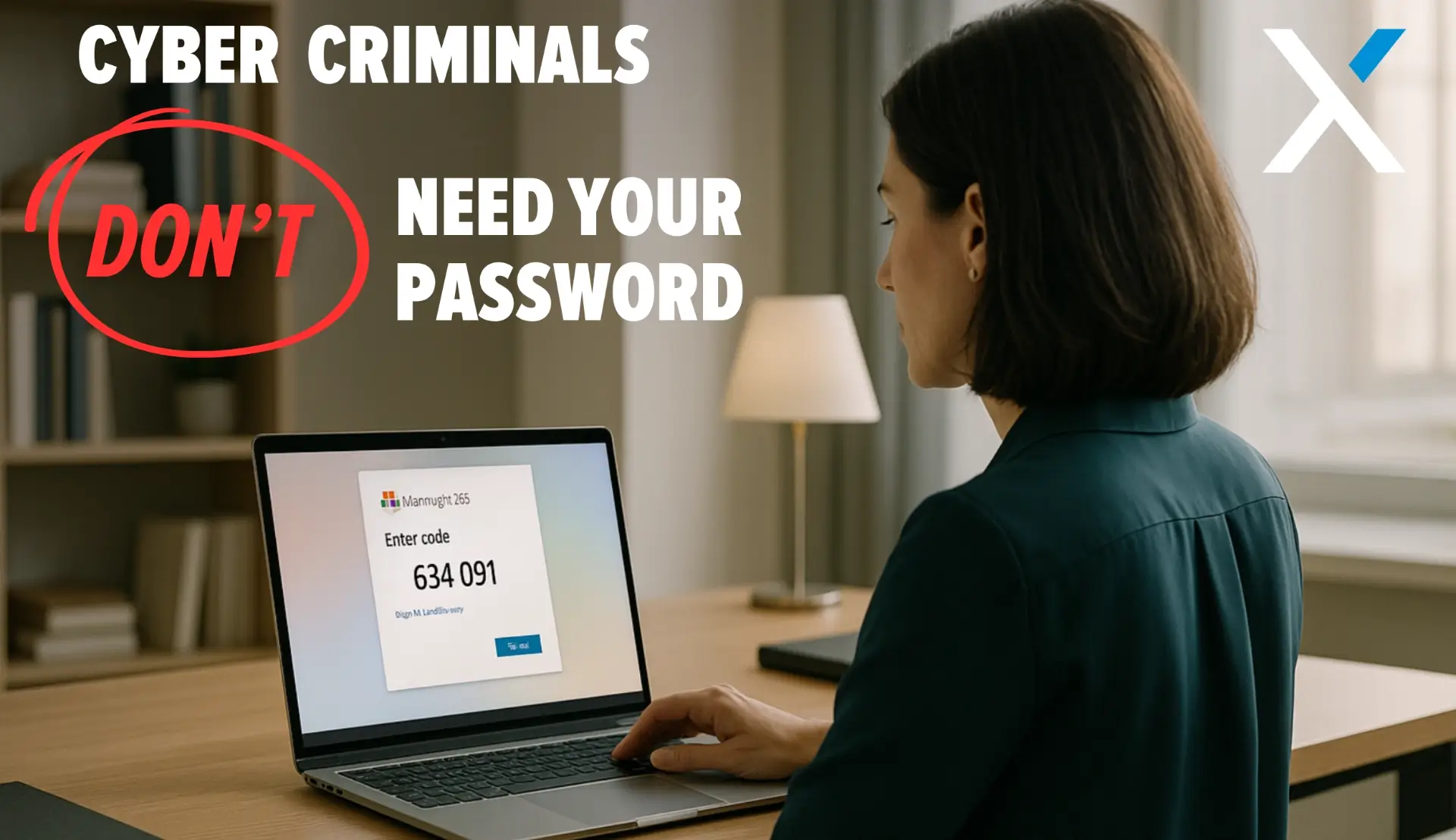You take your security seriously. You’ve done everything right: strong passwords, MFA, staff training…and yet another cyber threat emerges.
This time, it’s called device-code phishing, and it’s snagging professionals in law firms nationwide using trusted Microsoft login flows.
Here’s how it happens:
- A familiar email lands, maybe from someone you know or a department in your firm. It’s an invite to join a Teams meeting.
- You click the link, which takes you to a genuine Microsoft login page, complete with everything that looks legit.
- You’re prompted for a short code – the “device code.” Just a quick entry to join “your meeting.”
- The moment you enter that code, the attacker logs in from their own device. They’re using legitimate credentials, so they can bypass even MFA and snag a session token that keeps them logged in.
Once inside, they gain access to your Outlook, SharePoint, OneDrive – anything tied to your Microsoft account. They can snoop, exfiltrate, or start phishing others within your firm using your identity as bait.
The impact of device-code phishing
Imagine this in your firm:
- A partner forwards a Teams link. You enter a code. Unbeknownst to you, it’s a gateway for criminals.
- They access confidential case files, client communications…everything.
- They stay logged in, even beyond a password reset.
All because device-code authentication looked “normal.” That’s why this scam is so stealthy and dangerous for legal professionals juggling deadlines and sensitive data.
What firms (and VPs of Operations) need to do today
1. Clarify device codes in communication
Train your team: If someone asks you to enter a code you didn’t request, step back. Even if it’s a Teams invite from a known colleague, verify it by either phone or separate chat.
“Did I ask for a code? Do I know this is real?”
If you’re uncertain, reach out directly. DON’T enter that code.
2. Review whether device-code flows are needed
Has your IT team turned on device-code authentication for everyday use? If not, disable it. If it’s required for a specific use case, restrict it through Conditional Access to known devices or locations.
3. Tighten security policies
Modern MFA methods, like passkeys (biometrics, FIDO), are now Microsoft’s default for new accounts. Encourage enrollment in passkeys and disable older methods such as SMS-based MFA. A recent survey also confirms SMS and email-based MFA remain vulnerable to phishing.
4. Build an ongoing awareness routine
Monthly reminders, quarterly drills, or spot quizzes help embed a cautious mindset. Awareness is your best defense.
Talking to your IT support partner
Bring these up:
| Topic | What to Ask |
| Device code usage | “Can we disable it unless absolutely necessary?” |
| Conditional Access | “Can we restrict device-code grants to known locations or devices?” |
| MFA policy | “Can we adopt passkeys or authenticator apps instead of SMS or email codes?” |
| Alerts & monitoring | “Can we detect unusual device-code logins or token creation?” |
Why this matters for law firm leaders
You’ve built a firm trusted for discretion, reliability, and calm under pressure – especially when tech misfires. But let’s face it, your team doesn’t need another way to get fooled. Device-code phishing is specifically designed to bypass the defenses you’ve spent time and money to build. It doesn’t involve phishing a password so your defenses can feel more brittle because of that.
When this happens, it’s more than data loss: it’s time stolen, trust shaken, and emotional energy drained…all while your staff looks to you to keep the firm safe and running.
Final thoughts
Device-code phishing is clever, but not unbeatable. With smart training, updated MFA, and tighter control over login flows, you can keep this threat at bay.
Remember:
- Don’t enter surprise codes. Always verify.
- Update your MFA strategy with passkeys or authenticator apps.
- Make sure your IT partner restricts or disables unused login flows.
- Refresh awareness regularly. Your firm’s calm depends on it.
Let me know if you’d like help crafting an internal policy, training session, or IT partner checklist. I’m here to make sure your firm’s day goes uninterrupted – and secure.
Here’s to less firefighting and more lawyering.
